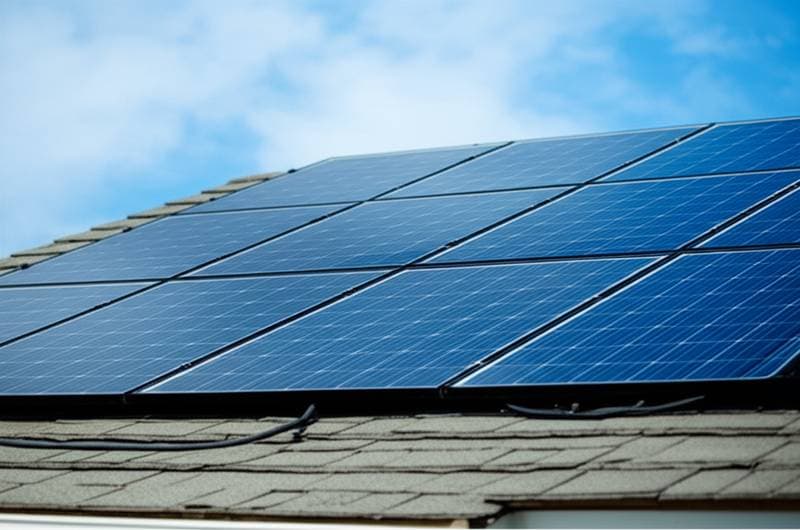DIY Solar Kits: Bypass Contractors for 2025 Installation
Homeowners often view solar energy favorably until installation estimates arrive. Expenses for labor, approvals, and premiums can elevate the total beyond panel prices alone. This disparity prompts exploration of DIY solar kits. Such kits facilitate panel deployment without engaging comprehensive contractor services, yielding substantial savings alongside reliable clean energy production. Although connecting panels or handling approvals may initially seem intimidating, contemporary kits streamline the majority of procedures.
Components of a DIY Solar Kit
A comprehensive kit typically supplies all essentials for an operational setup. Primary elements include:
- Solar panels that transform sunlight into electrical energy
- Inverters that convert direct current (DC) to alternating current (AC) suitable for household appliances
- Mounting hardware designed for rooftop or terrestrial placement
- Wiring, connectors, and protective fuses
- Monitoring devices to observe output and system efficiency
Certain kits incorporate optional batteries for energy storage. Alternative configurations connect to the utility grid, permitting direct integration. This range supports customization according to financial constraints and objectives.
Operational Principles of the System
Solar panels feature silicon layers that liberate electrons upon sunlight exposure. Electron flow generates electrical current. Panels connect in arrays to amplify capacity. The inverter processes this current for domestic utilization. During daylight, household devices prioritize solar power. Surplus energy returns to the grid, accruing credits through net billing mechanisms.
Numerical illustrations clarify potential benefits. For a 6 kW system, panels in an area such as Philadelphia produce approximately 1,250 kilowatt-hours (kWh) annually per kilowatt. Scaling to 6 kW yields about 7,500 kWh yearly. At an average utility rate of 17 cents per kWh, annual savings reach roughly 1,275 dollars. Accounting for fixed charges, investment recovery occurs in approximately 6 to 8 years, influenced by equipment pricing and available rebates.
Financial Realities of DIY Solar Kits
Procuring a kit from online retailers or regional vendors substantially lowers overall expenses. A standard contractor bid for a 6 kW installation may total 18,000 to 20,000 dollars prior to rebates. Equivalent kits range from 8,000 to 10,000 dollars.
This variance accounts for labor and administrative costs. Contractors manage liability coverage, engineering, and personnel compensation. DIY approaches shift these duties to the owner. The exchange involves personal time and accountability, offset by tangible economies. Pairing with the federal solar tax credit, which reimburses a notable portion of hardware and labor expenditures, further diminishes upfront investments.
Qualifying properties may access state rebates or municipal incentives, recouping an additional 500 to 1,500 dollars. Numerous installations achieve net costs around 7,000 dollars post-rebates, broadening viability for previously excluded households.
Navigating Permits, Inspections, and Safety Protocols
Self-directed solar deployment necessitates adherence to permitting regulations. Jurisdictions mandate electrical permits at minimum, with some requiring structural evaluations. Vendor-provided permit-ready documentation, including schematics, capacity assessments, and technical specifications, aids in meeting authority expectations and accelerating endorsements.
Employment of UL-listed equipment and compliance with National Electrical Code guidelines prove indispensable. Utilities demand pre-connection inspections to safeguard residences and infrastructure integrity. Individuals uneasy with terminal electrical linkages may engage a certified electrician solely for that phase. This combined method ensures security and regulatory alignment for many DIY participants.
Deployment Schedule and Required Effort
Following permit clearance, physical assembly proceeds efficiently. Secure mounting rails to roof supports or foundational stakes, affix panels to rails, and link wiring sequentially. Competent homeowners equipped with standard tools complete modest systems across an extended weekend.
Inverter integration and monitoring configuration extend the process by one additional day. Battery-inclusive systems demand supplementary cabling and accommodation. Contemporary designs employ plug-and-snap connectors, eliminating bespoke soldering or compression. Precise annotations minimize mistakes, supplemented by detailed manuals or instructional videos in most kits.
System Oversight and Upkeep
Post-commissioning, monitoring interfaces serve as vital resources. Applications reveal daily and cumulative energy yields. Observing production increments on clear days validates the undertaking.
Upkeep demands remain low. Maintain panel cleanliness and ensure unobstructed solar access. Periodically hose away accumulations of dust or residue every few months. Examine cabling for deterioration and verify mounting fasteners. Panels exhibit gradual efficiency decline, averaging 0.5 percent annually, sustaining robust performance for 25 years or longer.
Abrupt output reductions trigger diagnostic features in monitoring tools to identify affected components. Kits generally warrant panels for 10 to 25 years and inverters for 10 years.
Ideal Scenarios for DIY Adoption
DIY solar kits suit individuals enthusiastic about practical endeavors and familiar with elementary electrical principles. Properties with sound roofing and minimal shading present optimal conditions. Complex architectures, membrane surfaces, or dense foliage might justify expert consultation.
Recognize that DIY entails dedication to preparation, regulatory liaison, and verification stages. For participants, the fulfillment of autonomous completion and initial energy generation surpasses the labor involved.
Initiating Your Solar Project
- Assess rooftop suitability regarding solar irradiance and available area.
- Calculate consumption needs using historical utility statements to determine system scale.
- Investigate jurisdictional permitting stipulations prior to equipment acquisition.
- Evaluate kit providers based on guarantee durations, assistance levels, and inverter varieties.
- Secure incentives promptly to confirm eligibility.
- Arrange verifications immediately after deployment completion.
Thorough preliminary allocation averts subsequent interruptions. Upon inspection approval, observe reversed utility metering as sunlight energizes your residence.
Frequently Asked Questions
Can solar panels be installed without an electrician?
Most procedures fall within homeowner capabilities, yet a licensed electrician must execute the ultimate grid interconnection to uphold safety and standards.
How long does a DIY solar installation require?
Modest systems achieve mounting and wiring within two to three days post-permit approval.
